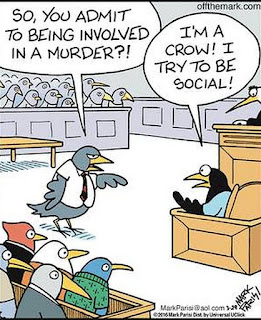Thinking about many of today’s problems in the harsh light
of a dystopian America becoming reality, the idea of bringing back the Draft
came to mind. In 1968, I was drafted by
the Army to serve for two years and “volunteered” for four years in the Navy
instead. Before boot camp, I asked a
cousin who had already served in the Army, what it was like. His answer was something to the effect that
he wouldn’t do it again for a million dollars but also wouldn’t trade the experience
he had for the same amount of money. It
took me four years to fully understand what he had said.
 |
| Boot Camp |
My vision for a New Draft would provide a two-year
obligation for all residents of this country of a certain age, regardless of
sex or physical readiness for combat. This
would not be the dreaded Draft of my youth that conscripted all 18-year-old
males to military service, but a modified Draft system for all. Your two-year debt to this country must be
served or started any time between the ages of 18 and 26. All 18 year-olds would owe two years of
government based service. Certain
variations of service may be appropriate in specific situations. For instance, those seeking careers in the
medical professions could fulfill their obligations with residency or
internships in VA hospitals or select under-served communities. Other disciplines requiring advanced degrees
and lengthy educations could have similar accommodation. I would also foresee certain situations where
this public service obligation could be served on a part time basis for a
longer period where the total number of hours equated with a two-year full time
commitment.
Our last experience with conscription (the Draft) was from
1940 to 1973, and included World War II, Korea, and Viet Nam. This Draft was strictly a military
conscription to serve our country in time of war. You may call it a patriotic or civic duty or
just a debt you owe for living in a free country; it is my opinion that government
service should be part of everyone’s experience and not just a convenience to
our military in time of war.
Under this New Draft as I will call it, you could serve your
two years with any of dozens of positions.
Some of these positions would have to be created but all would benefit
our society as a whole. You could serve
in the military, do clerical or administrative tasks, work on a construction
crew fixing our infrastructure, assist veterans in a VA hospital, or work in any
number of similar positions that would provide benefit to our nation and local
communities. All positions would be
paid. Many would provide some manner of
career training with future employment opportunities when appropriate. Some positions would be handled through
private contractors working on special government projects like infrastructure
improvements. Many positions would
include “3-hots and a cot” to use the old military parlance for meals and
housing.
The idea for this article came from many places. It was today however, prompted by a news story of a Kentucky community that has suffered from their inability to provide clean
drinking water to their citizens. Water
treatment was minimal and the pipes delivering the water leaked about half of
what entered. The pipes were also a
source of contamination. The problem had
been identified at least 50 years ago, but nothing has been done. The EPA claims that the water in this system
exceeds the limits for many carcinogens.
The same area also has high rates of varying cancers.
 |
| Martin County Kentucky Water Tanks |
I thought, why, in the year 2018, when our
government delivers aid to millions of needy individuals in foreign lands, can
we not take care of our own. Clean
drinking water should be available to all of our nation’s citizens. We need some common sense priorities in this
country. While most of us would agree
with the importance of border security, certainly providing clean potable water
to our nation should rank much higher on our list of priority expenditures than
building a border wall. A New Draft
system could provide a source of labor for both a new water system for citizens
like those in Kentucky and help with construction projects like a border wall.
In the Navy, we had the SEABEES. Their name was a heterograph of the initials
CB’s which stood for Construction Battalion.
Their motto was Seabees Can Do. From
personal experience, their motto was no BS.
Perhaps a similar but quasi-military organization, staffed with New
Draft participants, encompassing a mobile construction force of engineers,
designers, and construction personnel, could be put to the task of working on a
list of domestic issues. They could
re-build water supplies, fix bridges in “out-of-the-way” America, and could be
commandeered during natural disasters.
 |
| Navy Seabees (Construction Battalion) Can Do |
The New Draft would put all participants through an
evaluation system and would match skills and abilities with opportunities. Earlier in this article, I used the term “residents”
to identify who had an obligation under the New Draft and this was a conscious
decision. The New Draft could be used to
provide a path to citizenship for many of the so-called “Dreamers” whose
immigration status is uncertain. There
would be very few exemptions under the New Draft. Severe physical and psychological problems
would be identified and evaluated on an individual basis. Certainly, bone spurs in the heels would not
qualify for exemption as even wheelchair bound individuals would be eligible
for certain Draft positions. There would
be no religious deferments, as accommodations would be made for some manner of
public service compliant with religious beliefs. Any individuals found to be unfit for the New
Draft, would definitely never be permitted to own a firearm.
 |
| Athlete in center of picture missed the draft due to bone spurs |
Another benefit of the New Draft would be for our
military. By many accounts, our
experiment with an all-volunteer military has been a failure. I recently watched a YouTube video interview
of retired Army Col. Larry Wilkerson, a former Chief of Staff to Sec. of State
Gen. Colin Powell, who painted a rather bleak picture of the current state of
the military. An all-encompassing public
service New Draft implementation would seem to provide at least some impetus
toward solving their personnel issues.
I was never a fan of the military conscription Draft of the
Cold War, but I now find myself favoring an expanded public service Draft, my
New Draft if you will. As I neared this
point in writing this article, I stumbled upon a 2012 piece in the Huffington
Post titled, Is
Now the Time for Mandatory National Service, by Karen M. Whitney, Ph.D.,
President of Clarion University. Her
point of view was similar to what you have read so far, but with a slight
twist. She thought that the two-year
commitment should always be between the ages of 18 and 20 for everyone. She foresaw the benefit of a two-year break
between high school and college, some of which was based on the maturity levels
of 20-year-old college freshmen versus 18-year-olds.
 |
| College Maturity at it's Finest |
I can easily see a time when it would become necessary to
reinstate our military draft. The
all-volunteer service we now use may not see us through any major conflict. War is our destiny. Our country has been at war for 223 of the
last 240 years. That’s less than 20
years of peace since 1776. We are
currently in the longest war in our nation’s history, surpassing the 234-month
Vietnam debacle. Our Orwellian future is
here. I would only hope that, if we find
it necessary to bring back the Draft, we do so with a public service option as
outlined here.
PEACE!
 |
| Picture taken by me at 2015 Jazz & Heritage Festival in New Orleans |





































